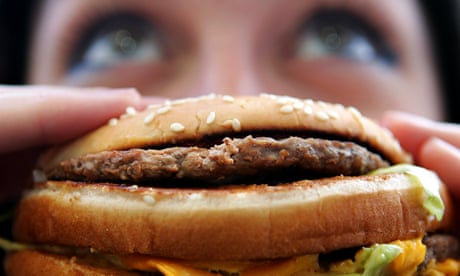- by foxnews
- 13 Mar 2025
Why the price of a Big Mac tells us the Australian dollar is undervalued - and most economists agree
Why the price of a Big Mac tells us the Australian dollar is undervalued - and most economists agree
- by theguardian
- 05 Feb 2022
- in news

While economists parse every Reserve Bank of Australia murmur on what it implies for interest rates, there's another variable many of us will be eyeing just as closely now global borders are finally opening up: the Australian dollar.
And oddly enough, the central bank is not a very helpful guide at all, and nor, it turns out, is the government, when it comes to the exchange rate.
Here's where analysts think the Australian dollar is headed, and why those outward bound may have additional reasons for cheer.
As of mid-Friday afternoon AEDT, the Australian dollar was buying 71.4 US cents, a rise of about 2% over the past week.
The trade-weighted index, based on the composition of Australia's merchandise goods and services trade, was sitting at 60.1 as of Friday's close. (China's yuan is about a third of the weight.)
These are good markers because those two rates - 71 US cents and a TWI of 60 - also happen to match the assumed values used by the quarterly RBA's Statement on Monetary Policy released by the central bank on Friday.
Key RBA forecasts - such as GDP growth accelerating from 4.75% in 2021 to 5.5% in 2022 before slowing to a 2.5% clip in 2023 - are based in part on those exchange rates. The previous statement, in November, assumed 74 US cents and a TWI at 62.
Commercial bank economists tend to be more optimistic about the dollar, at least against the greenback.
Among the big banks, for instance, the ANZ expects the dollar to appreciate to 75 US cents by the end of year. NAB forecasts it will be worth about 77 US cents, Westpac 78 US cents, and the CBA 80 cents by then.
That's promising news if you're planning that overseas trip, but it's a trend that seems counterintuitive.
Other central banks - such as the Bank of England earlier this week and the US Federal Reserve next month - have started to raise interest rates or soon will. The RBA, meanwhile, is only saying a rise in its official cash rate is "plausible" this year, and seems eager to hold off as long as possible.
If other nations are paying more to hold their debt, shouldn't the Aussie dollar wilt?
No, says Catherine Birch, a senior ANZ economist: "The first six months of a [US] Fed tightening cycle are generally negative for the USD. This is because the bulk of positioning adjustment has occurred well in advance of the first actual hike. This cycle looks no different."
Kim Mundy, a senior CBA currency strategist, agrees: "[T]he global economy will have more momentum - and more inflation - at the start of this tightening cycle than in any other cycle of the past four decades. This should support assets like the AUD that are leveraged to the global cycle."
In other words, Australian rocks and other commodities are in demand, and hence the Aussie dollars needed to acquire them.
If the Aussie dollar appreciates, it will be getting closer to its "fair value".
According to CBA's Mundy, the dollar is "significantly undervalued", at least according to a calculation based on the RBA's commodity price index and relative interest rate differentials between Australia and the US. "We estimate fair value is centred on 86 [US] cents," she says.
The calculus, then, implies the Australian dollar should be about 20% stronger.
Interestingly, that differential is not far off another popular international gauge, the Economist's Big Mac Index. Running since 1986, the index tracks how much a hamburger that is essentially identical around the globe costs in different nations.
"A Big Mac costs A$6.40 in Australia and US$5.81 in the United States," the newspaper said this week. "The implied exchange rate is 1.10. The difference between this and the actual exchange rate, 1.42, [and] suggests the Australian dollar is 22.4% undervalued."
Apart from buying more overseas, a stronger dollar has implications for those RBA and government forecasts.
Mind you, the central bank is fully cognisant that exchange rates shift, but views it a mug's game to try to predict them. Instead, they base each quarterly set of predictions on the Aussie dollar's value at the time.
The RBA deputy governor, Luci Ellis, explained the logic in a speech last year where she noted that - particularly in the midst of a pandemic - "forecasting in this environment is inevitably an exercise in humility".
The federal government operates along similar lines, and so its mid-year economic and fiscal outlook (Myefo) is based on the dollar at 75 US cents and 62 on the TWI that prevailed at the time it was compiled by Treasury.
The RBA typically doesn't publish a range of scenarios but it did explore what the effects of currency changes would be on other forecasts in a 2019 monetary policy statement. It examined what a sustained 5% depreciation of the exchange rate would do, but the reverse can also be assumed if the dollar strengthened.
GDP growth would be roughly half a percentage point lower than in the central forecasts at that time with a 5% stronger dollar. Such a shift in the exchange rate - if not more - is what private economists are tipping.
The slowdown in GDP growth largely reflects a substitution away from Australian goods and services following the exchange rate appreciation, which leads to a rise in imports and a drop in export volumes.
The jobless rate would be 0.4 percentage points higher and the year-ended trimmed mean inflation - used by the RBA in its rates decision - drops by about 0.3 percentage point under this 5% strengthening scenario for the Aussie dollar, all else being equal.
Justin Smirk, a senior Westpac economist, said his bank incorporates those influences in its rate outlook. "[I]f our forecasts are correct, we will see more benefit of a stronger AUD in moderating Australian inflationary pressures in 2023-2024," he says.
And so, should a stronger dollar come to pass, some of the pressure on the RBA to lift interest rates this year and beyond could ease. If so, those on variable mortgage rates might have cause to celebrate - perhaps with an overseas holiday.
- by foxnews
- descember 09, 2016
Flight passenger shares 'infuriating' moment when man intrudes on her leg space: 'Please don't do this'
A traveler says a fellow passenger intruded on her space on an airplane. Social media users reacted to the post, with some referring to it as a "manspreading" moment.
read more


